5. A Future Without Borders Between 2D and 3D
Lastly, I would like you to say something to the fans from your respective positions. Let’s start with you, Hayashida-san.
This game is for the Nintendo 3DS system, so I think we were able to achieve a lot - like stereoscopic 3D and StreetPass features - that we hadn’t before for the Super Mario series. And this game features a course that is a homage to The Legend of Zelda . We tried a room that looks as if you are peeking into it from above, something never seen before in Super Mario.
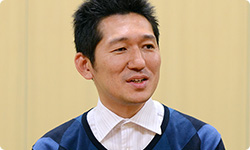
Seen from above, only Mario’s cap would be visible! (laughs)
Mario isn’t designed, function-wise, to be seen from above.
But when we made this, Tezuka-san’s reaction was incredibly positive, and we thought, “It’s got to be The Legend of Zelda,” and we just thought, “Put it in!”
Oh, more “Put it in! Put it in!” (laughs)
And we made candles. If you light all of them with Fire Mario, you hear that iconic Zelda sound.
Really? It makes that sound?
Yes. (laughs)
After all, this is the twenty-fifth anniversary of The Legend of Zelda! (laughs) Koizumi-san, you’ve been present throughout the history of 3D Super Mario. Your comments, please.
I’ve been involved since Super Mario 64...so it has been 15 years. Like other coworkers this time, I was young back then, but it was fun coming to work every day. It was the experience rather than the games themselves that was fun. There have been a lot of detours on the way here, but this game holds all the technology we’ve built up to this point and builds upon all the past failures and discoveries. It showcases the good parts of both 2D and 3D, but it’s also a grand culmination of 3D Super Mario. I think we took another fresh step forward.
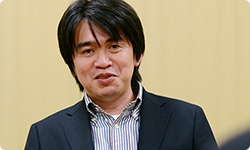
It is satisfying both as a showcase of all that’s good about 2D and 3D and as the grand sum of what you’ve done so far in 3D.
Yes. The fun contained in Super Mario 64 and Super Mario Sunshine is scattered throughout, so it’s fun to look for those places. I think this game will be key in leading to the next Super Mario game - a new point of origin, or a crossroads.
I see. Tezuka-san?
This game feels like a collaborative project with 2D Super Mario, so it introduces various devices and enemies from 2D Super Mario, as if to say, “This is how they look in 3D!” I feel like we are introducing something new to players of 2D Super Mario. I want to reflect what we gained from Super Mario 3D Land in the next 2D Super Mario game.
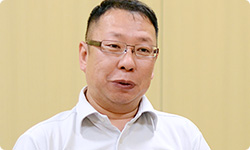
Both 2D and 3D Super Mario games may receive an influence from and build upon what appears in this game.
Yes. I think we can get all kinds of ideas from what we used here and try to take them the other way into 2D Super Mario games. (laughs)
Thank you. Please do! (laughs)
Alright, Miyamoto-san?
We made it so that you don’t have to play in stereoscopic 3D, but it’s more fun if you do. So first I hope players will get used to playing in 3D. That is an important point with regard to this project. Also, I think a lot of people first played Super Mario with the Super Mario 64 DS10 game. When you’re playing that, you gradually get better and really get absorbed in it. 10Super Mario 64 DS: A game released for the Nintendo DS system in Japan in December 2004. It includes a 3D action game and stylus-controlled minigames.
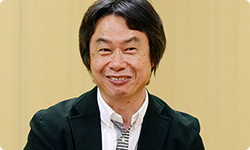
A lot of people figured out what they needed to do as they were exploring and suddenly found that they had done it.
Super Mario 64 DS sold about four times as much in America as in Japan, so a lot of people who play games in America are used to playing 3D Super Mario. Against that background, it isn’t exactly wrong to say, “Super Mario in 3D is difficult, so we made a game introduction that is like 2D Super Mario,” but that isn’t quite true - it’s just that not everyone is used to it yet.
Yes.
So try playing it once. Some people say, “It’s hard to play 3D Super Mario,” but others who have played it say, “You can go forward and back and I feel like trying all sorts of things, so it’s fun.” I hope people will play it, because it’s easy to play, and really fun. I wouldn’t lie! Really! (laughs)
Because in Super Mario 3D Land, before you know it, you’re playing a 3D Super Mario game.
Don’t let anyone fool you who says 3D Super Mario is difficult. If you play it for yourself, a more fun future awaits - and for us as well! (laughs)
(laughs)
It is a mysterious game. Until now, we’ve talked about 2D Super Mario and 3D Super Mario as if they are separate, but Super Mario 3D Land may put an end to that. Both 2D and 3D Super Mario came about as the result of making games while thinking, “I wonder if we could make something cool by doing something athletic in that kind of world.” I hope this game removes the borders in our brains between 2D and 3D Super Mario. It would be funny if in the future archaeologists say, “You know, they used to talk about the two as if they were separate.”
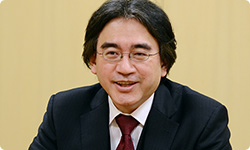
What does our archaeologist think?
Oh, yes. I think so, too. (laughs)
As rival Miyamoto-watchers, Hayashida-san, let’s continue to do our best!
Yes, let’s! (laughs)
(laughs)
Thank you for today.
Thank you.